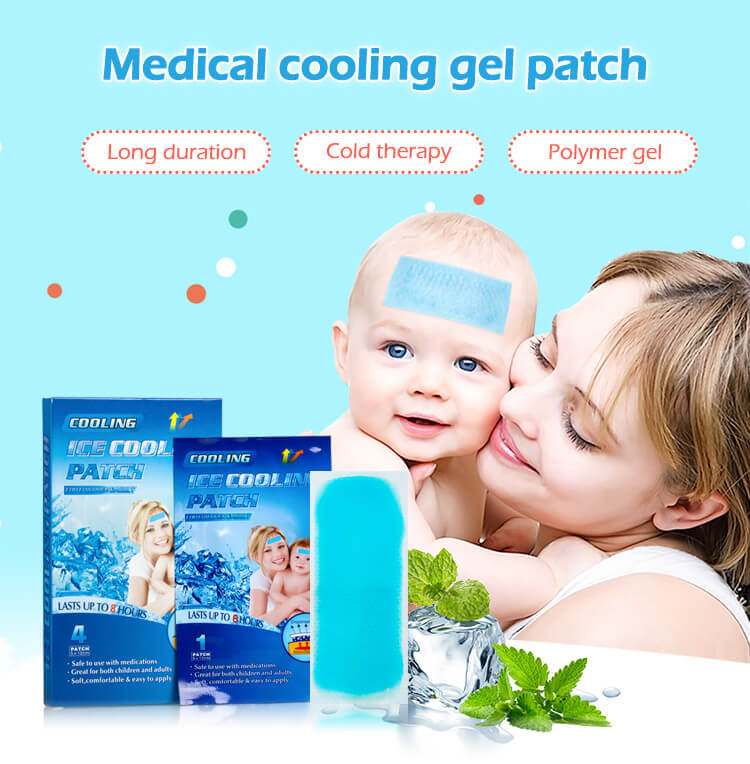Author:Kangdi 30-05-2024
When it comes to pain relief and managing discomfort, individuals often find themselves choosing between DIY home remedies and commercially available solutions like cooling gel patches. Both options have their advantages and disadvantages, and understanding these can help you make an informed decision. This article explores the pros and cons of DIY home remedies versus cooling gel patches.
DIY Home Remedies
Pros
Cost-Effective: DIY home remedies typically involve ingredients that are readily available and inexpensive. Items like ice packs, essential oils, and herbal teas are common household items that can be used for pain relief without breaking the bank.
Natural Ingredients: Many people prefer using natural ingredients to avoid synthetic chemicals. DIY remedies often include natural components like aloe vera, turmeric, and ginger, which are known for their healing properties.
Customization: Home remedies allow for a high degree of customization. You can adjust the ingredients and methods based on your specific needs and preferences, tailoring the remedy to what works best for you.
Ease of Access: Most DIY remedies use ingredients that are easy to find, either in your kitchen or local grocery store, making them accessible at any time without the need for a special trip to the pharmacy.
Cons
Inconsistent Results: The effectiveness of DIY remedies can vary greatly from person to person. What works for one individual may not work for another, leading to inconsistent and sometimes disappointing results.
Lack of Scientific Evidence: Many DIY remedies lack rigorous scientific backing. While some natural ingredients are proven to be effective, others may not have sufficient evidence to support their use for pain relief.
Preparation Time: Preparing DIY remedies can be time-consuming. From gathering ingredients to mixing and applying them, the process can be inconvenient, especially when immediate relief is needed.
Potential for Allergies: Natural ingredients can still cause allergic reactions in some people. Without proper knowledge of potential allergens, DIY remedies could inadvertently cause more harm than good.
Pros
Convenience: Cooling gel patches are pre-prepared and easy to use. Simply apply the patch to the affected area for instant relief, making them ideal for quick and hassle-free pain management.
Consistent Relief: These patches are designed to deliver a consistent cooling effect, providing reliable and predictable results. The cooling sensation helps to reduce pain and inflammation effectively.
Scientifically Backed: Many cooling gel patches are formulated based on scientific research and clinical trials, ensuring their efficacy and safety. They are often tested for quality and effectiveness before reaching the market.
Portable: Cooling gel patches are compact and portable, making them easy to carry and use on-the-go. Whether at work, during travel, or at home, they offer a convenient pain relief solution.
Cons
Cost: Compared to DIY remedies, cooling gel patches can be more expensive, especially if used frequently. The cost can add up over time, making them less affordable for some individuals.
Limited Customization: Cooling gel patches come in standard formulations, which may not be customizable to individual needs. Some users might find them less flexible compared to DIY options.
Potential Skin Irritation: Some people may experience skin irritation or allergic reactions to the ingredients in the patches. It’s essential to check the ingredient list and perform a patch test before extensive use.
Temporary Relief: Cooling gel patches provide temporary relief and do not address the underlying cause of the pain. They are best used as part of a broader pain management strategy rather than a standalone solution.
Conclusion
Choosing between DIY home remedies and cooling gel patches depends on individual preferences, needs, and circumstances. DIY remedies offer a natural, customizable, and cost-effective solution, but they can be inconsistent and time-consuming. On the other hand, cooling gel patches provide convenient, consistent, and scientifically backed relief, though they can be more expensive and less customizable. By weighing these pros and cons, individuals can select the option that best suits their lifestyle and pain management requirements.
 0086 19937104978
0086 19937104978





